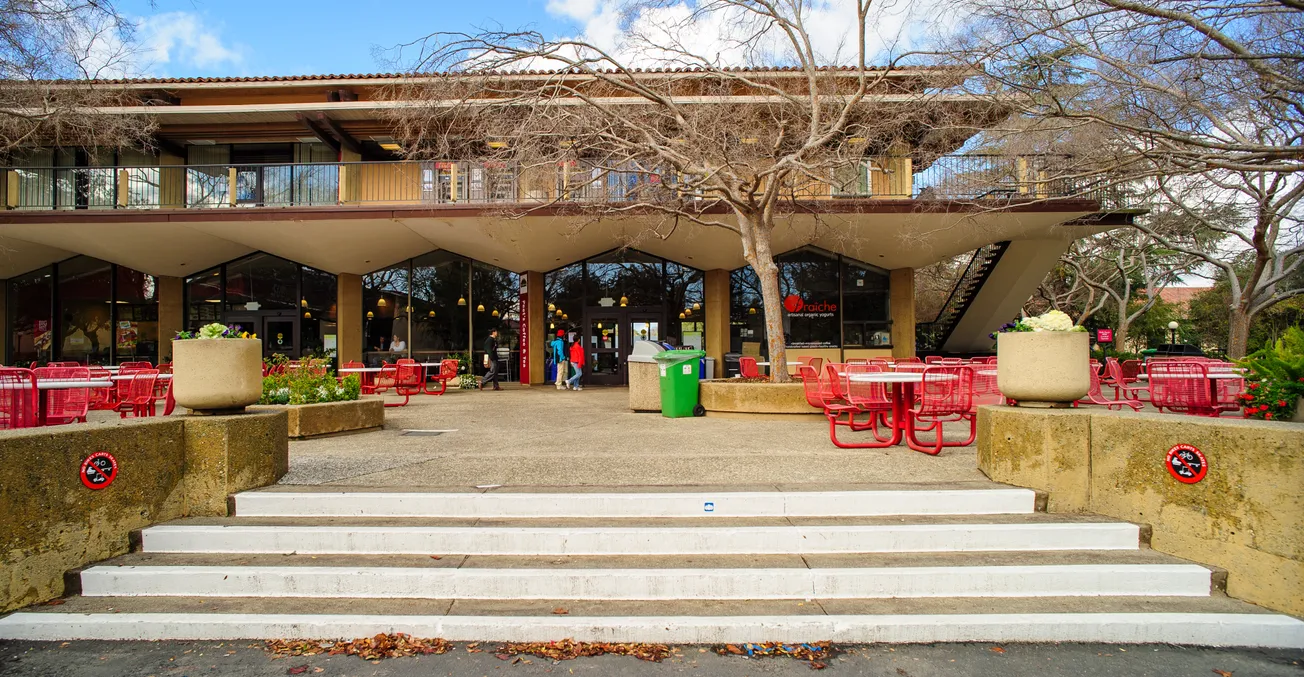Table of Contents
Most schools offer a welcoming central hub — packed with coffee shops and communal spaces— where students can study, dine, and socialize. Old Union and Tresidder, unfortunately, fail to fit the bill.
Stanford’s supposed campus hub is crowded with greasy ‘60s-style tables and sunken sofas. Few students see Tresidder as the “lively meeting” place R&DE makes it out to be.
Stanford is home to some of the most innovative spaces and buildings in the country, yet “the heart of campus” is an outdated and depressing complex. Old Union is not conducive at all to a buzzing social scene with its harsh lighting, uninviting study spaces, and mediocre eateries. It also lacks affordable entertainment options like billiards, video games, or table tennis.
The few places that accept meal plan dollars, The Axe & Palm and Decadence, hardly count as fine eateries. Most Stanford undergraduates head to the dining halls, their row houses, or Coupa to eat and socialize, only stopping by Tresidder to run an errand or make a quick purchase.
By contrast, the courtyard at the Graduate School of Business (GSB) is an architectural delight, complete with sloping lawns, a high quality cafeteria, patio tables in the sun, and shaded picnic benches. Likewise, Harvard recently completed the state of the art Smith Campus Center, home to expansive rooms filled with natural light, a rooftop garden, and a myriad of couches and tables for both formal studying and informal hangouts.
Tresidder and Old Union are in a pitiful state by comparison.
Luckily for us, Stanford is attempting to remake Tresidder through the "Stanford Town Center Vision" plan and is inviting students to offer feedback. First, I recommend that Stanford completely revamp Old Union by knocking down the buildings so that there is sufficient space to create a cohesive environment for the campus center.
I encourage University planners to take inspiration from architecturally-aesthetic campus centers such as the GSB courtyard and Harvard’s Smith Campus Center to create a dynamic place for undergraduates to convene and come together for informal gatherings, relaxation, and collaboration.
There has been discussion on mitigating the need to go off-campus for errands; I highly suggest having convenience stores that replace the need to go to CVS or Walgreens. I hope for a variety of dining experiences all within campus’ “downtown,” whether that be grab-and-go lunches, sit-down cafes, or grocery stores like Munger but more expansive. In the vision document, they note their plan for a 15,000-30,000 square foot grocery store similar to Trader Joe’s.
I look forward to the time when Tresidder really is a place where you “can meet someone new,” as the vision document describes it. I am really hopeful about how LMN Architects, a firm known for their success with urban planning, will transform this promising part of campus.
The University’s plan to renovate White Plaza and build a “Town Center” offers the potential to improve campus social life and build a better community. It would increase the number of interactions between students from different social circles and make this enormous campus feel smaller and significantly closer.
There are extensive possibilities when it comes to rethinking the future of the University’s student life, starting with a student center. I am excited to see these plans be brought to fruition and for the space to be enjoyed by the Stanford students ahead. Let’s update the parts of campus that have been left behind!









